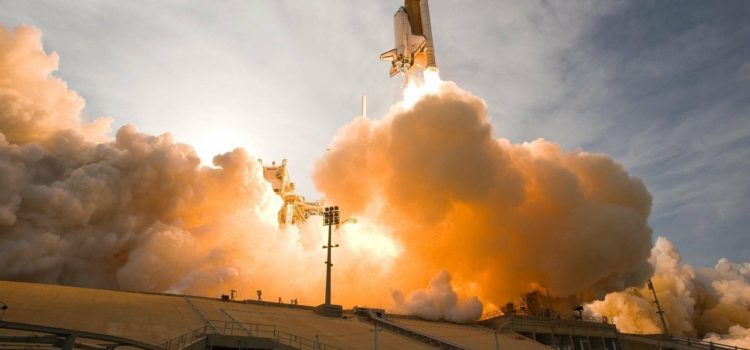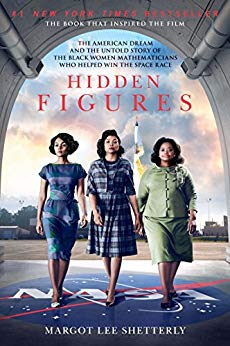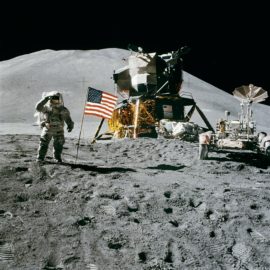

This article is an excerpt from the Shortform summary of "Hidden Figures" by Margot Lee Shetterly. Shortform has the world's best summaries of books you should be reading.
Like this article? Sign up for a free trial here .
When did NACA become NASA, and why? What were NACA Nuts, and how did they help change the culture at NACA (NASA)?
NACA, the National Advisory Committee for Aeronautics, became NASA in 1958. NACA Nuts was a nickname for new hires at NACA (NASA) as the organization turned to defense and space exploration. In their quest to hire the best people possible, NACA (NASA) hired people from all over the country. As a result, the culture slowly began to shift toward a more equal workplace environment, due in part to less tolerance for segregation from Northern hires, and the persistence of black NACA (NASA) employees.
NACA Becomes NASA
NACA (NASA) underwent political and strategic changes as well as social ones. Before the organization was NASA, it was NACA. There was great pressure on NACA to design and test satellites that would be capable of making it to space. This was no easy feat, as any such craft would need to first break through the sound barrier, escape Earth’s gravitational pull, and settle into a speed (18,000 MPH) that would enable it to lock into a low orbit around the planet, all while withstanding levels of heat that could reach up to 3,000 degrees Fahrenheit.
NACA’s destiny as the powerhouse of America’s Space Race was hardly assured at this time. There were competing agencies within the federal government that might have conceivably taken the mantle of space leadership from NACA and Langley, including the US Air Force, the US Naval Research Observatory, and the Army Ballistic Missile Agency. But NACA, with its wealth of engineering talent, was selected as the home for all of America’s space research and operations—and Langley would be its nerve center. In October 1958, all competing operations were placed under NACA’s purview. With the expanded mission came a new name for the agency: the National Aeronautics and Space Administration, or NASA.
With incredible talent, NASA was on its way to becoming a desegregated organization, which would provide a more efficient workforce.
Miriam Mann’s Protest
One key example of how the culture at NACA (NASA) changed was Miriam Mann’s protest. Langley was a place where colleagues worked closely with one another (often literally close, thanks to the wartime hiring spree) and clerks and computers might rub shoulders with top aeronautics researchers. Yet, because of the color of their skin, the West Area Computers were largely excluded from this collegial atmosphere. Although Executive Order 8802 had mandated fair employment in the defense industry, Langley’s location in the Commonwealth of Virginia forced it to comply with that state’s segregation statutes.
This was symbolized most hurtfully by the sign on the table where they sat at the back of the cafeteria that read, “COLORED COMPUTERS.” Although they were ostensibly professionals on par with their colleagues at Langley, they were still treated as something less than equal.
The Sign Comes Down
Seeing this sign every day was deeply insulting and offensive for the West Computers. One day, a West Computer named Miriam Mann could take it no more. She walked over to the sign, removed it, and stuffed it into her purse.
This prompted a mini struggle for equal treatment within Langley at NACA (NASA). The sign was back up a few days later, prompting Miriam to take it down once again. This back-and-forth played out over the course of weeks, but Miriam and her fellow computers were determined to take a stand against this small, but potent symbol of oppression. Her husband warned her that she might lose her job over this act of defiance, but Miriam knew that this was a battle that needed to be fought.
Eventually, she won. One day, the sign went into Miriam’s purse and no one ever bothered to replace it. This was a powerful victory, one that helped to convince her fellow women of West Computing that the laboratory was theirs as well. Dorothy, Miriam, and the other black computers had become more than colleagues—they had become a tight-knit band, an army in its own right that was prepared to fight and win the war for equality at home.
NACA (NASA) underwent many changes throughout the course of its history, including its well-known name change. It took years of hard work and objections to change NACA, and later NASA culture, and the women of Hidden Figures, including Miriam Mann, had no small part in paving the way for others.

———End of Preview———
Like what you just read? Read the rest of the world's best summary of Margot Lee Shetterly's "Hidden Figures" at Shortform .
Here's what you'll find in our full Hidden Figures summary :
- How brave black women were instrumental to the American space race
- How they confronted racism and sexism to forge a better future
- Their enduring legacy in American history






